Sluggish finds lead to a new record!
 November 24, 2013
November 24, 2013

Diving at Pulau Hantu is all about going slow and staring hard at the substrate. A prefect critter for pleasure on our reefs then, is the sea slug. To photograph the Ceratosoma nudibranch above, I didn’t even have to dive! Just popped my head under the water, and there it was, crawling about the sargassum algae on the reef flat!
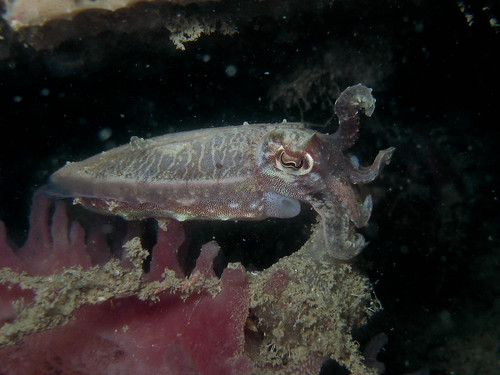
Further down the reef, hiding from the currents, was this little cuttlefish perched on a sponge.

Not too far away from the first, was this other individual, clinging onto a rock.
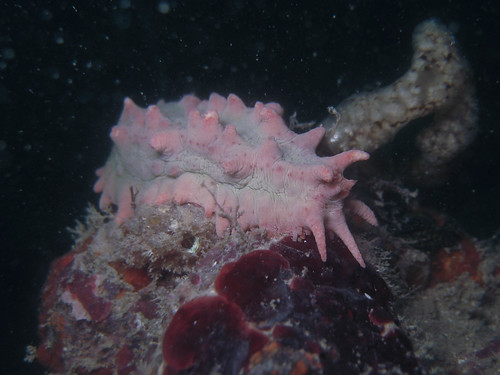
It seemed a good day for spotting sea cucumbers, there were several of them, like this Thorny Sea Cucumber (Colochirus quadrangularis) that gathers tiny food particles from the water with its colourful tentacles.
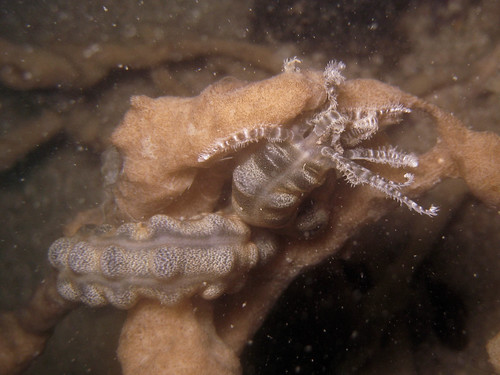
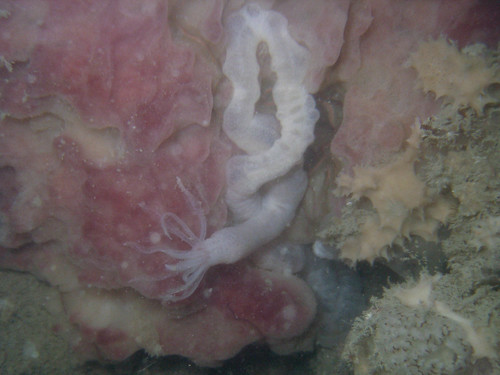
There were also these Synaptid Sea Cucumbers that can be commonly seen on our shores, but many have yet to be identified. Unlike the Thorny Sea Cucumber, these synaptids don’t have tube feet. Instead, they have tiny hook-like structures on their skin, which feel somewhat sticky to the touch and allow the animal to hold on to rocks or seaweed and seagrass.
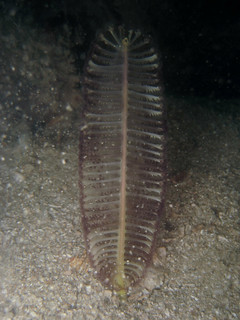
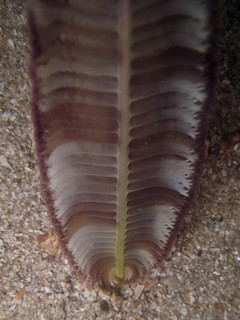
There were some Sea Pens growing right out of the substrate.
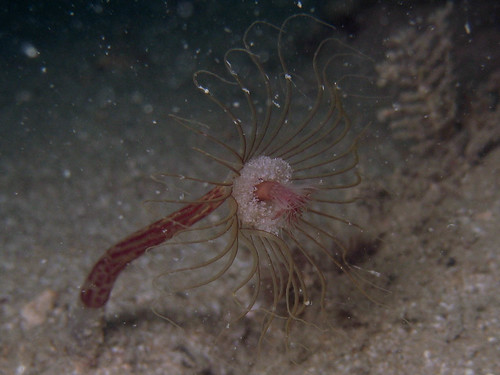
Also fastened to the sea bed where these tube worm-looking hydroids!

Hantu’s reef is home to many magnificent flatworms! You don’t get worms like that on land!
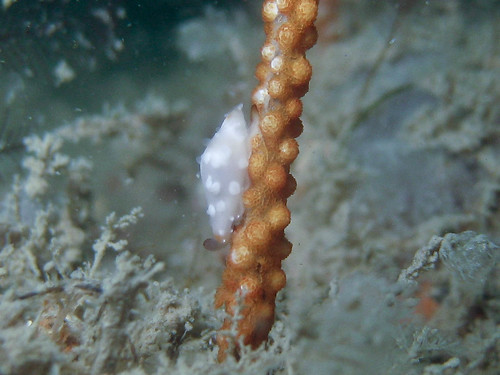
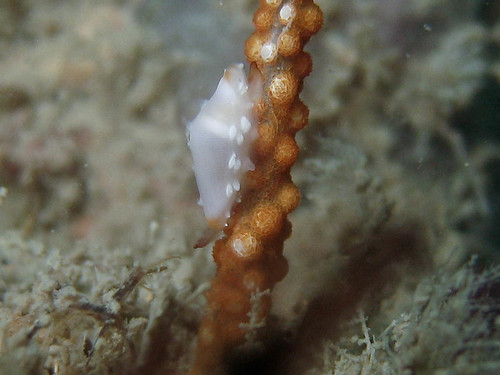
Clinging onto the base of a gorgonian coral was this Allied cowrie. You can see the animal our of is shell. Compare both photos to see how the cowrie is able to mimic even the texture of the polyps on the gorgonian. In the bottom photo, its mantle appears smoother because it has shrunken back the bumps, probably because it felt disturbed by me.
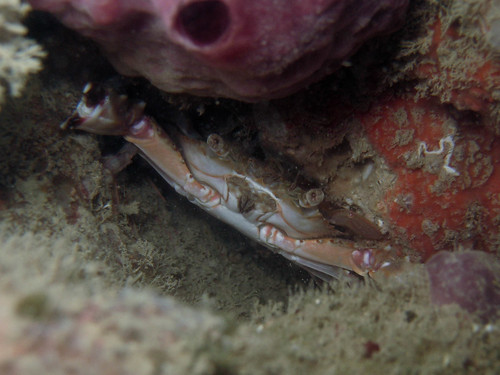
A crab guards it hole. It sends a very clear signal!

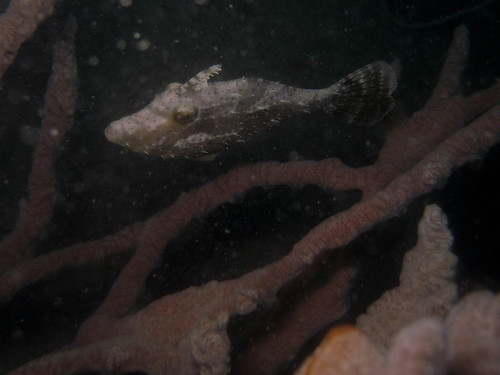
The series of two photos above show the same filefish against two different backdrops. While it was swimming amidst the sargassum, and amidst pink branching sponge. See how it has altered it colouration even up to the top of its tail!

Take a closer look at what might seem like just a white piece of gorgonian coral and you might just find a whole cluster of brittlestars!
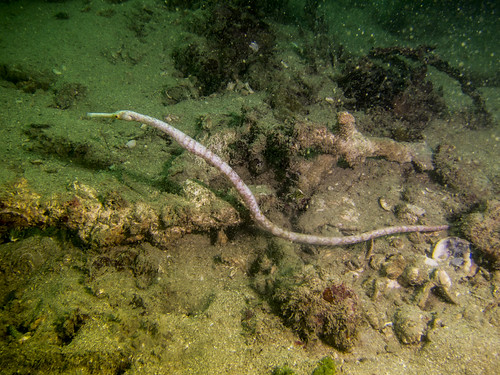
By resting on the bottom of the sea bed and remaining very still, a Stick pipefish mimics a gorgonian whip coral, and waits about to suck in food that drifts by in the current.

A super common Blue dragon nudibranch.
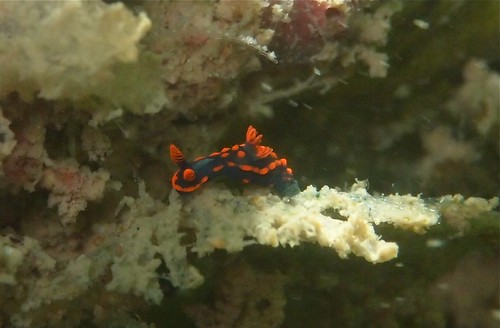
And a very uncommon NEW RECORD for Singapore waters! This beautifully coloured sea slug has been recorded in the tropical Indo-Western Pacific oceans, but this is a first record for Singapore! What a delight it is to be a part of these discoveries during our casual weekend dives! This is a reminder to keep your eyes peeled while diving, and make a note or better yet, take a photo of the things you encounter. What may seem common might just be something new! Photo courtesy of Toh Chay Hoon.
To see more photos from this dive, visit the Hantu Blog Gallery!
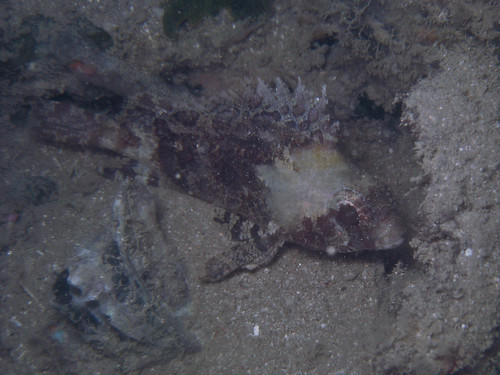
 Posted in
Posted in 



 content rss
content rss
December 22nd, 2013 at 6:05 pm
Hello !!!
This post reminded me this cuttlefish changing colour very fast. I wonder if octopuses can change their colous as fast as them..
http://www.youtube.com/watch?v=I7Z5konkZfQ
Thank you.